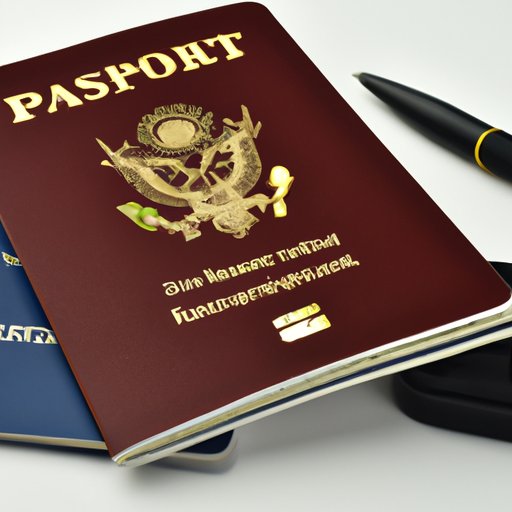
Introduction
Whether you’re a seasoned traveler or a first-time flyer, it’s important to understand the identification requirements for air travel. Unfortunately, many people aren’t aware of the types of ID they need to have on hand before heading to the airport. According to a survey by the US Travel Association, up to 57% of all Americans are unaware of the REAL ID deadline and 39% are not even aware of the requirement itself. In this article, we’ll explore the identification requirements for air travel and help you take steps to ensure a stress-free journey.
Various Forms of ID Required for Air Travel
When preparing to fly domestically, there are a few different types of identification that you can use to satisfy TSA requirements:
- A state-issued driver’s license or ID card
- A federally recognized tribal-issued photo ID
- A valid US passport or passport card
- A Department of Homeland Security Trusted Traveler Program card (Global Entry, TSA PreCheck, NEXUS, SENTRI, and FAST)
- A US military ID or a military dependent’s ID
- A permanent resident card or Alien Registration Receipt Card (Form I-551)
It’s important to note that only REAL ID-compliant driver’s licenses and ID cards will be accepted for boarding domestic flights. These REAL IDs are marked with a star in the upper right-hand corner of the card, which signifies that the ID meets the new security requirements set in place by the US government. TSA PreCheck and Global Entry memberships also require a background check and interview.
Practical Guide for Obtaining Necessary Identification
If you don’t already have a valid form of identification required for air travel, there are several steps you can take to obtain one.
- State-issued driver’s license or ID: To obtain a new license, visit your local DMV. Be sure to bring a certified copy of your birth certificate and your Social Security card or a W2 form.
- Passport: Apply for a passport at your nearest post office or government building. You will need to provide proof of citizenship, pay the fee, and have your photo taken.
- DMV fee waivers: Low-income individuals and families can receive fee exemptions and waivers through various social services programs.
- Lost or stolen ID: If your ID is lost or stolen, file a police report and contact your local DMV for a replacement. You may also need to get a new passport if that was what was lost or stolen.
Personal Experiences of Frequent Flyers
Despite efforts to obtain proper identification, sometimes things go awry for travelers. According to an article by Forbes, travelers who forget or lose their IDs often run into issues when trying to board a plane. One traveler recalled a time when they were informed their ID was invalid right at the gate and then had to wait for hours in the TSA line to only find out that their passport was stowed away in their carry-on all along. Another recalled the challenges of renewing a passport, which involves long waits in a government office, filling out forms, and locating documents.
News Story Updates on Identification Requirements
The identification requirements for air travel are frequently updated, so it’s important to stay up to date on the latest news. In recent changes, the TSA has implemented new safety standards for carry-on bags and has made it mandatory to remove all electronic devices larger than a cell phone from these bags when going through screening procedures.
Think-Piece Discussion on Implications of Strict Identification Requirements
Although identification requirements are in place to ensure safety, there has been debate about whether these policies go too far and infringe upon personal liberties and civil rights. While some argue that stricter identification policies are necessary to keep travelers safe, others worry about a potential loss of privacy and discrimination, particularly against groups that may have limited access to the required identification forms.
Humorous Piece on Air Travel Trials and Tribulations
Let’s face it: air travel can be chaotic and confusing at times. From the dizzying array of ticket options to the never-ending security lines, it’s often a bit of a headache to get through the airport and onto the plane. Despite these challenges, many travelers still find ways to find the humor in some of the ridiculousness that comes along with air travel. Whether it’s poking fun at the TSA pat-downs or joking about the extremely tiny airline snacks, humorous pieces can lighten the mood and give readers something to laugh about.
Conclusion
While navigating the identification requirements for air travel can be complicated, taking steps to prepare ahead of time can make the process much smoother. Knowing what types of identification are acceptable and ensuring that you have them before heading to the airport can help avoid delays and headaches. By following the information and tips outlined in this article, you should feel confident and prepared for your next flight!
Final tips and insights for travelers: Always keep track of your ID and other necessary travel documents, make copies to keep in a separate location, and be sure to check TSA guidelines before traveling.




